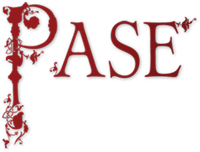Table of Contents
Top of page
Name
Summary
Distribution Map
Property List
Profile
Bibliography
Bottom of page
Frederic 5
Frederic ‘of Sussex’, fl. 1066
Male
CPL
4 of 5
Summary
Frederic 5 was a thegn with two manors in Sussex, together assessed at 12 hides and worth £6.Distribution map of property and lordships associated with this name in DB
List of property and lordships associated with this name in DB
Holder 1066
| Shire | Phil. ref. | Vill | DB Spelling | Holder 1066 | Lord 1066 | Tenant-in-Chief 1086 | 1086 Subtenant | Fiscal Value | 1066 Value | 1086 Value | Conf. | Show on Map |
|---|---|---|---|---|---|---|---|---|---|---|---|---|
| Sussex | 12,43 | East Chiltington | Fredri | Frederic 'of Sussex' | Edward, king | William de Warenne | Robert 'the man of William de Warenne' | 7.00 | 4.00 | 5.00 | B | Map |
| Sussex | 13,4 | Erringham | Fredri | Frederic 'of Sussex' | Edward, king | William de Briouze | - | 5.00 | 2.00 | 2.00 | B | Map |
| Totals | ||||||||||||
Profile
The name Frederic occurs in DB as a TRE landowner only three times, all in south-eastern England. On balance, however, they are marginally more likely to belong to two different people, Frederic 5 in Sussex and Frederic 4 in Kent (contra Lewis 1994: 141): different spellings are used in the two counties, and the nearer of the Sussex manors is 55 difficult miles through the Weald from the Kentish manor. At first sight it might be thought unlikely that two thegns in relatively close proximity would have the same Continental name, not otherwise used in pre-Conquest England, but in fact the south-east was precisely the region in which such a name would appear, whether brought by immigrants from Europe or adopted by native families familiar with Continental names.Frederic 5’s Sussex manors are only 12 or 13 miles apart and in each his name has the same unusual spelling (Fredri) despite being in different rapes. Frederic was specifically said to have full power of alienation at both places.
The larger property comprised 7 of the 9 hides of the Wealden vill of East Chiltington. It included houses in the largest Sussex borough, Lewes, only 3 miles away, as well as outlying land which was detached from the manor after the Conquest because it lay in the count of Mortain’s rape, not, like East Chiltington itself, in William de Warenne’s; that evidently locates the outlier in the northern Weald, but it is not readily identifiable with any of the small Wealden estates listed among the count of Mortain’s lands in DB (Suss. 12:43–44).
Frederic’s other manor comprised the whole 5 hides of Erringham, afterwards forming the northern part of the parish of Shoreham, on the South Downs and with a frontage to the Adur valley. The two manors together furnished the complementary economic resources to be found in Wealden woods, Downland pastures, and estuarine meadows.
Bibliography
Lewis 1994: C. P. Lewis, ‘The French in England before the Norman Conquest’, Anglo-Norman Studies, 17: Proceedings of the Battle Conference, 1994 (1995), 123–44
